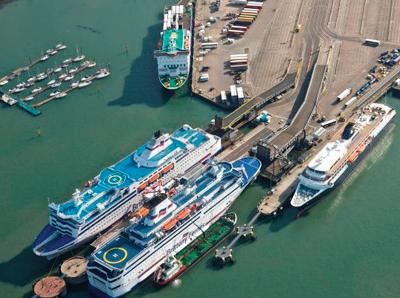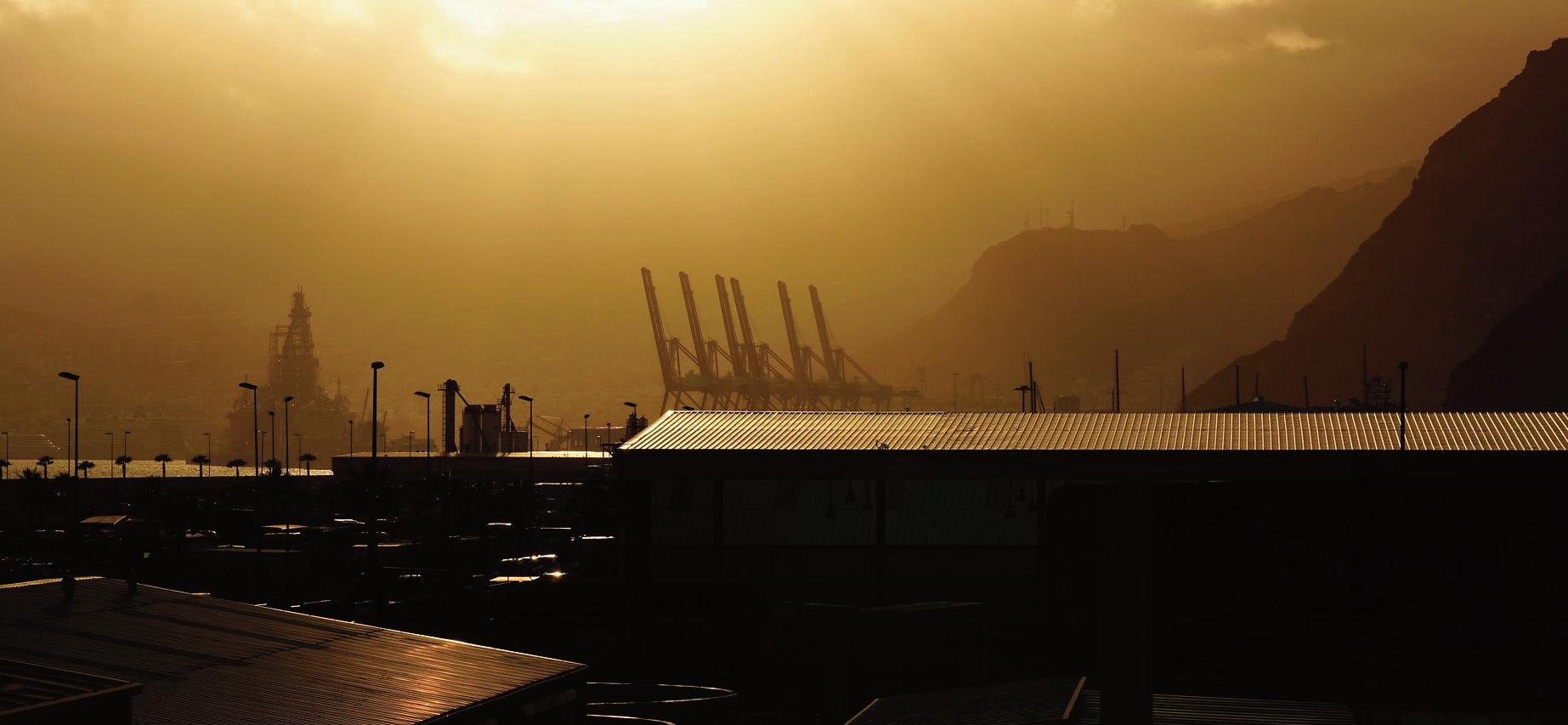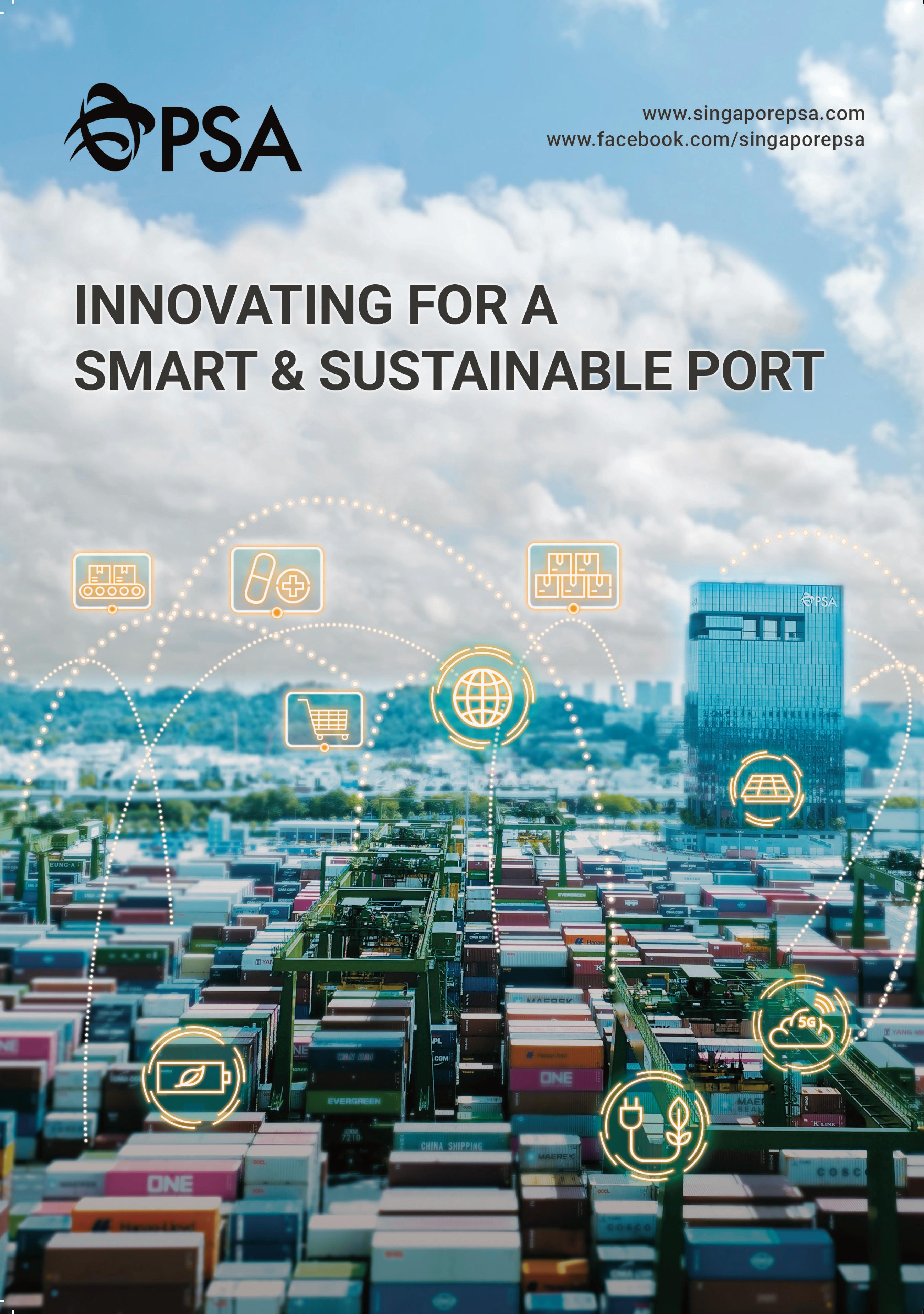
7 minute read
Planning
DECARBONISING PORTS USING GREEN PLANNING
In this Q&A GreenPort talks to Richard Marsh, partner at law firm BDB Pitmans, about ports' routes to decarbonisation
Q How was the decarbonisation exacerbated by the Covid-19 pandemic? A It is clear from speaking to port users and operators that the past year has been extremely difficult; revenues have been significantly hit and, for many, there has had to be a primary focus on business survival.
So, it is understandable that company decarbonisation measures and plans may have taken a back seat, particularly where capital expenditure is involved. But notwithstanding the pandemic, there will be a strong push from the government to incentivise and require sector and corporate decarbonisation; in fact only last month the government confirmed that it will commit cutting carbon emissions by 78% by 2035 compared to 1990 levels, and will adopt the 6th carbon budget proposed by the Committee on Climate Change which, for the first time, will include international shipping and aviation emissions.
Provided that economies recovers well from the Covid pandemic, ports will hopefully come to the conclusion that expenditure on decarbonisation measures now will result in long term savings, as well as having considerable collateral benefits, such as strengthening public relations, contributing towards corporate social / ESG responsibility and assisting with employee relations, retention and attraction.
Q In terms of formulating a decarbonisation strategy, do you have advice about how ports can go about creating one? A Each port's decarbonisation strategy will very much depend on the size of its estate, the nature of its operations and the extent of 'free space' (including roof space) that can be used for infrastructure such as solar panels, wind turbines etc. Although not a legal consideration, it is absolutely vital for a port's decarbonisation strategy to be driven forward by a passionate and dynamic individual or team or, otherwise, to outsource part or all of the strategy creation / implementation to external consultants.
Jerry Clarke at Portsmouth Port is a perfect example of this necessary role. We, BDB Pitmans, are using an external environmental consultancy to help us to both measure our baseline carbon footprint and also devise decarbonisation strategies; a law firm is obviously very different to a port, but I believe that seeking at least initial strategy advice from external experts is an excellent use of money and time.
What role has BDB Pitmans played in helping ports to realise their green potential?
The BDB Pitmans Infrastructure Planning team have a long history of providing development planning and commercial legal advice to the UK's ports. That ranges from advice on developing, redeveloping or extending ports (including securing the necessary planning consents / Harbour Revision Order powers and, in the process, advising on the legal requirements in respect of environmental effects and Net Zero / GHG / sustainability considerations) to advising on all legal aspects of implementing decarbonisation measures (such as solar panels, electricity infrastructure, wind turbines) within port estates.
We are currently advising on a wide range of solar farms, hydrogen projects and pipeline developments; we understand the issues that crop up on both port and energy developments. In addition BDB Pitmans, as a firm, is able to offer the full range of legal services that ports and port users require, including planning, real estate, corporate, finance and commercial contracts.
What were the key take homes from the BDB Pitmans ‘Decarbonising Ports: The Route to Net Zero’
The aim of the webinar (with panel speakers from the British Ports Association, Portsmouth Port, Red Funnel Ferries, Vattenfall Network Solutions and Royal Haskoning DHV) was to bring together a range of port users, port operators, energy solution providers and consultants to discuss the challenges and issues that port users and operators are facing in decarbonising their operations and, critically, to discuss the range of measures that certain users and operators are implementing (or will soon be implementing) to rapidly reduce their carbon emissions.
The messages arising from the event were: 4 There are a huge number of 'easy wins' that port operators and users can implement to make decent inroads into their carbon emissions 4 It doesn't necessarily require significant expenditure on
8 The port matches
environmental initiatives with available funding to get the best chance of implementation
Q A

Photo: koala0815/Pixabay
marquee measures or large capital projects; Jerry Clarke from Portsmouth Port explained the huge range of decarbonisation measures that he is responsible for developing and implementing, and several of the measures do not require significant capital expenditure 4 Even measures that one might think require significant upfront capital expenditure can be implemented with a range of financing options so as to spread the cost. This was demonstrated by the electrification options (private wire networks, smart grids and controls) being rolled out by
Vattenfall Network Solutions.
4 If we are to meet our 2050 Net Zero target all sectors of the economy, including ports, will need continued government support both in terms of a certain and joined up regulatory framework but also financial incentives to assist in the takeup of decarbonisation measures.
8 Decarbonising
ports means tackling market, regulatory, costs and electrification barriers
Decarbonising Ports webinar
Decarbonising ports means tackling market, regulatory, costs and electrification barriers.
This is the view of the British Ports Association (BPA), which has stressed that ports are all very different in the UK with different levels of control over emissions.
Speaking at the recent BDB Pitmans 'Decarbonising Ports: The Route to Net Zero' webinar, Mark Simmonds, director of policy & external affairs at the BPA, said: “There is a level of uncertainty within ports about what the demand for zero-emission fuels might be.”
He explained it's difficult to talk about decarbonising ports, without talking about decarbonising ships. There are also barriers in the market for decarbonising highly specialised port equipment, where electrification hasn't necessarily progressed as much as much as the ports sector would like, or huge costs are involved.
“Where there are electric alternatives for much port equipment, there's huge costs involved, and the cost and more broadly the business case is usually a barrier.”
Productivity is key, the equipment needs to be as productive as diesel counterparts, Mr Simmonds stressed.
The BPA conclude measures to overcome barriers to emissions reduction includes a green maritime fund, an energy system that supports maritime ambitions, a regulatory environment that provides certainty for lowcarbon investment, a clear technology-neutral indication of direction for industry, and international leadership at the IMO and other multilateral organisations.
TACKLING EMISSIONS
Jerry Clarke, pilot and assistant harbour master at the council-owned Portsmouth International Port (PIP) explained the port ensures it undertaking carbon audits (using DEFRA guidance) because “you cannot manage what you do not measure”.
In 2018, PIP produced 50,000 tonnes of CO2 and 60,000 in 2019 with 844 more ships. PIP has installed air quality sensors utilising IOT to measure different polluting sources.
Mr Clarke matches environmental initiatives on the PIP's capital expenditure programme with available funding to give the port the best chance of getting to the implementation stage.
The port secured GB£500,000 funding from the EU Interreg fund to implement ecofeatures in the Linkspan 4 and another GB£500,000 for a seawater heat transfer pump which serves to heat and cool the cruise and ferry passenger terminal, which also has seawater flushing toilets and air ducts on the roof utilising wind to cool the terminal.
It also secured £500,000 Innovate UK funding to work with Marine South East, Swanbarton and the Energy Catapult to install a dual fuel electric battery which uses machine learning and AI. “It uses port renewable energy and will control the distribution of energy around the port.”
In addition to installing a massive solar array, PIP has an Energy storage system in place and is looking into providing battery power for two ro-ro ferries for two hours alongside or a small cruise ship. He said that the use of split busbars on modern ships could facilitate the use of storage batteries for power in port.
PIP's Solent Freeport bid will see it aim to secure funding to undertake a study/audit into the possibility of using large Energy Storage Systems in conjunction with intelligent energy management systems and grid supply to provide shore power, without massive capital infrastructure projects.
New Brittany Ferries LNG ferries coming to the port in 2022/3 aim to plug-in to shore power.
BDB Pitmans was established in 2018 following a merger between legacy firms Bircham Dyson Bell (BDB) and Pitmans Law.









